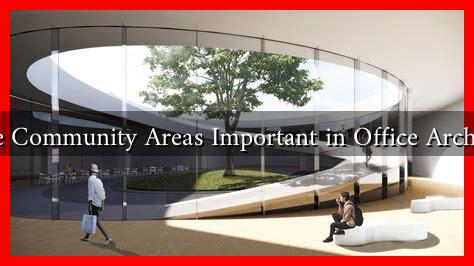-
Table of Contents
- Why Are Community Areas Important in Office Architecture?
- The Role of Community Areas in Modern Workspaces
- Design Considerations for Community Areas
- Case Studies: Successful Community Areas in Office Design
- The Impact of Community Areas on Employee Well-Being
- Conclusion: The Future of Office Architecture
Why Are Community Areas Important in Office Architecture?
In the evolving landscape of office architecture, the concept of community areas has gained significant traction. These spaces, designed to foster interaction and collaboration among employees, play a crucial role in enhancing workplace culture and productivity. This article delves into the importance of community areas in office architecture, exploring their benefits, design considerations, and real-world examples.
The Role of Community Areas in Modern Workspaces
Community areas serve as informal gathering spots within an office environment, promoting social interaction and collaboration. They can take various forms, including lounges, break rooms, and open spaces designed for teamwork. The significance of these areas can be summarized as follows:
- Enhancing Collaboration: Community areas encourage spontaneous interactions among employees, leading to innovative ideas and solutions.
- Boosting Employee Morale: Comfortable and inviting spaces contribute to a positive work atmosphere, enhancing overall job satisfaction.
- Encouraging Work-Life Balance: These areas provide employees with a place to relax and recharge, promoting mental well-being.
Design Considerations for Community Areas
When designing community areas, architects and planners must consider several factors to ensure these spaces are effective and appealing:
- Accessibility: Community areas should be easily accessible to all employees, regardless of their role or mobility.
- Flexibility: Spaces should be adaptable to various activities, from casual meetings to social events.
- Comfort: Incorporating comfortable seating, natural light, and greenery can enhance the overall ambiance.
- Technology Integration: Providing access to technology, such as charging stations and Wi-Fi, can facilitate collaboration.
Case Studies: Successful Community Areas in Office Design
Several companies have successfully integrated community areas into their office designs, showcasing the benefits of these spaces:
- Google: Known for its innovative workspaces, Google incorporates community areas that include game rooms, cafes, and open lounges. These spaces encourage employees to take breaks and interact, fostering a collaborative culture.
- Airbnb: The Airbnb headquarters features a large communal kitchen and dining area, designed to bring employees together. This space not only serves as a dining area but also as a venue for team-building activities and informal meetings.
- WeWork: As a co-working space provider, WeWork emphasizes community areas in its designs. Their locations often include lounges, event spaces, and kitchens, promoting networking and collaboration among diverse professionals.
The Impact of Community Areas on Employee Well-Being
Research indicates that community areas can significantly impact employee well-being and productivity. A study by the Gartner Group found that 75% of remote workers expressed a desire to return to the office, primarily for social interaction. Furthermore, a report by the Harvard Business School highlighted that companies with well-designed community areas saw a 20% increase in employee engagement and a 15% boost in productivity.
Conclusion: The Future of Office Architecture
As the nature of work continues to evolve, the importance of community areas in office architecture cannot be overstated. These spaces not only enhance collaboration and employee morale but also contribute to a healthier work-life balance. By prioritizing the design of community areas, companies can create environments that foster innovation, engagement, and well-being. As we look to the future, it is clear that community areas will play a pivotal role in shaping the workplaces of tomorrow.

